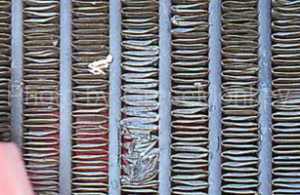Maintenance of automobile cooling system · Around radiator
When a “cooler” for keeping the temperature of an automobile engine properly develops, troubles such as overheating occur, so that the engine is greatly damaged as well as the engine becomes seriously damaged, and a large repair cost is required There are many. By regularly maintaining the “cooling device” of this car, it is possible to prevent troubles that may occur in the engine beforehand.
radiator
The engine of a car converts thermal energy generated when burning into kinetic energy and uses it as the power to run. Heat generated by this thermal energy raises the temperature of the engine itself and creates a heating state and becomes overheating as it is. When overheating occurs, the parts constituting the engine may be deformed due to high heat, the lubrication function of the engine oil may be deteriorated, the parts may be burned by heat, or the fuel ignites spontaneously due to high heat and the ignition plug ignites Due to symptoms such as knocking which burns, the engine will not function properly.
To prevent these symptoms, the engine is equipped with a cooling device called “radiator”. The radiator liquid (LLC · coolant) flowing inside the engine circulates inside the engine and absorbs the heat of the engine and becomes hot. This heated radiator liquid is cooled by the radiator and circulated inside the engine again by a pump (water pump) inside the engine. The radiator cools the radiator liquid with traveling wind by traveling and a cooling fan installed.
The circulation route with the cooling layer is always filled with radiator liquid, and spare radiator liquid is stored in another radiator reservoir tank. If the radiator fluid in the engine is insufficient than the appropriate amount, the cooling capacity will decrease and overheat will occur. As the radiator liquid evaporates little by little from the inside of this reservoir tank by the heat and the total amount decreases, as a periodic maintenance, check the liquid volume from the gauge shown in the reservoir tank and if necessary To replenish the radiator fluid. Failure to do so may cause overheating if the radiator liquid becomes empty, so be careful.
Reservoir tank and radiator cap
Usually “water” used for radiator liquid boils and becomes a gas when the temperature exceeds 100 degrees, so cooling function disappears. To prevent this, by sealing the circulation route of the radiator liquid of the cooling device with the radiator cap, the pressure inside the circulation path is raised by the expansion due to the temperature rise of the radiator liquid, and the boiling temperature is raised to 100 degrees or more . And stabilize this boiling temperature to a certain temperature, without increasing the temperature any further. Also, in order to avoid breakage of the cooling system due to an abnormal rise in pressure, when the temperature and pressure of the radiator liquid becomes higher than a certain level, excess radiator liquid is sent to the reservoir tank to suppress the rise of pressure. Conversely, when the engine stops and the cooling water temperature and pressure drops, the radiator liquid is sucked back from the reservoir tank, keeping the state of the regulator liquid in the engine circulation path constant. This function is the role of reservoir tank and radiator cap.
In domestic cars, the radiator main body was generally equipped with a radiator cap and a reservoir tank therefrom, but in recent years there are cars that do not have this type of radiator cap. However, the device that applies pressure to the cooling water is generally located somewhere in the cooling device, and its position may be different depending on the car, but there are some that exist. Considering the cooling efficiency of the engine and ease of maintenance, the radiator cap may be connected to the radiator main body with a pipe or a hose, and the radiator cap is arranged in an appropriate position.
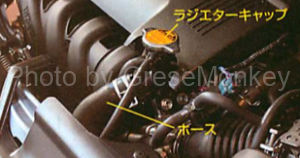

Cooling device without radiator cap.
For cooling systems without a radiator cap, it is possible to check the fluid volume of the radiator fluid and replace the radiator fluid from this reservoir tank. The new radiator fluid is to be injected from the reservoir tank.
Radiator liquid and LLC (Long life · coolant)
The radiator liquid functions just fine in “water”, but it freezes at 0 ° C and destroys the cooling system. So, it is common to mix LLC (long life coolant) antifreeze in order to lower this freezing temperature and prevent freezing. The past LLC has been used for a long period of time, it causes roughness or rust of parts in the cooling path, but in recent years super LLC with long life and superior performance is mainstream Has become. Although it depends on the manufacturer, it is about 7 years from the time of new car, about 100 thousand kilometers as a mileage is a replacement period.
In case of replacing this super coolant due to trouble such as leakage of cooling water, it is recommended to replace with super LLC of the same manufacturer in principle. Although it is OK for any old LLC car of old-age type, it is common to exchange LLC by diluting LLC by about 60% to normal tap water (hard water), but as it is now it is It seems that an exchangeable concentration of LLC is also on the market.
LLC concentration and freezing temperature
The freezing temperature of the radiator fluid changes with the concentration at which LLC is mixed. Although there are some changes depending on the product, even if the concentration of LLC is set to 60% or more, it will not raise the effect much more.
Normally, the LLC concentration at the time of a new car is roughly 30%, and it is around 50% in cold district specifications. As you can see from the figure below, at least in Japan, if the concentration of LLC is about 60%, you can see that you can run anywhere. If it is at least 30% to 40%, there is no problem as concentration.
- Relationship between LLC concentration and freezing temperature

Check radiator fluid volume
Check the radiator fluid quantity in the reservoir tank. The side of the reservoir tank has a scale that indicates the upper and lower limits of liquid volume such as “FULL – LOW” and “MAX – MIN”. If there is a liquid level in these two graduations, it is an appropriate amount, if it is missing, replenish it.
Inspection of fluid volume is done when the engine is cold. The reason is that when the engine temperature is high, the cooling water expands and the amount of liquid in the re-server tank is higher than usual. Conversely, when the temperature is low, the liquid volume decreases and settles on a fixed scale .
If the amount of fluid is not appropriate when the engine is cold, it is necessary to replenish it. If it overflows from the reservoir tank when it is warm, or if it is totally out of order, abnormality of the cooling system is suspected and inspection is necessary. As the radiator liquid evaporates or its amount does not change extremely unless it is a liquid leak, periodic inspection is necessary. Also, by removing the radiator cap, you can also check the fluid volume of the radiator main unit. However, this inspection work also needs to be done when the engine is cold. When the temperature of the engine is high, at the moment the radiator cap is opened, the pressure on the cooling system is released and the radiator fluid is injected.
In the case of a vehicle having no radiator cap
In the case of a cooling system without a radiator cap, the hose is guided to the reservoir tank, but it is not always connected to the radiator main unit. Often two hoses are installed in a high position and a low position using a pressure difference.
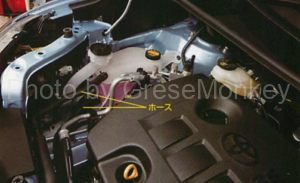
The reservoir tank is equipped with a scale for checking the liquid volume, and if there is a liquid level within this upper and lower limit scale it is an appropriate amount. If you are not extremely far from the scale, let’s carefully adjust the amount of liquid as you are going to see the situation afterwards.
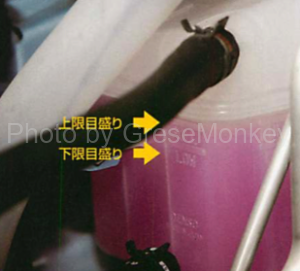
How to open the radiator cap
The radiator cap adopts a two-stage locking mechanism, rotates counterclockwise while holding down the cap, and releases the lock (pressure escapes) at the catch point of the first step, and further rotates it in the counterclockwise direction If you rotate to a position that does not rotate more than that, you can unlock the second row and pull it up to remove it.
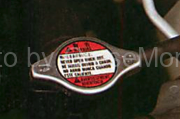
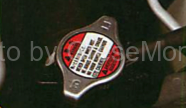

Inspection of the radiator cap body
The radiator cap has two valves, a pressure valve (pressure valve) and a vacuum valve (negative pressure valve), in order to keep the pressure inside the cooling device constant. These valves open and close according to the temperature of the radiator liquid, so that radiator liquid is sent to the reservoir tank and sucked back. In order to keep the pressure constant, confidentiality is also made high. If these functions deteriorate due to deterioration of the rubber part of the valve, it may cause overheating.
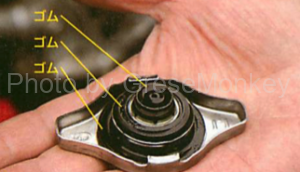

The radiator cap exerts confidentiality by the close contact of the inner rubber part. Therefore, if the rubber part gets out of elasticity due to aged deterioration or the like and deteriorates, the confidentiality decreases, so it is necessary to check the state of the rubber. You need a measuring tool to check the function of the radiator cap, but you can check the condition to a certain extent by merely checking the elasticity of the spring in the valve part of the cap. If the condition is bad, exchange as it is.
Inspection of cooling system hoses
In the cooling system, various types of hoses are used for each part, but this is also made of rubber, so it becomes easier to crack due to the elimination of elasticity due to deterioration. In that case, as the temperature of the radiator liquid rises and the pressure rises, leaks out from the deteriorated part and ruptures together with the hose, so caution is necessary.
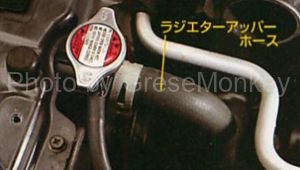
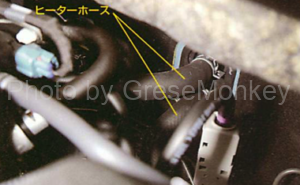
The most painful of the hose of the radiator liquid is the upper hose that is directly connected to the radiator. This is because a large pressure is applied to the radiator liquid which became hot in the engine. Other than that, a heater hose connected to the core used for heating of the air conditioner, a reservoir tank, a radiator main body, an overflow hose connected to the cap part, etc. are also important points to pay attention to inspection of important hoses.
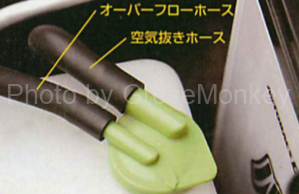
As the cooling system through which the radiator liquid passes is presumed to be completely sealed, in principle, repair will be carried out immediately in case any water leakage to any hose is recognized. Just a little overlooking will also cause overheating. In addition to visual inspection, in addition to visual inspection, hose types are inspected by radiator cap testers at the time of engine stop, by applying a prescribed pressure from the fitting opening of the radiator cap to apply the same state as the state where pressure is applied to the engine cooling system Check to see if there is any leakage of radiator liquid. If there is a water leak from the hose, it is almost the case that the hose is deteriorated or the hose band connecting the hose is damaged or not fitted tightly.
Inspection of radiator core
The radiator has an elongated tank to which the radiator hose connects above and below, and the radiator core connects both tanks. The radiator core is composed of many thin pipes, and a thin metal piece called fin is attached to the surface of the pipe therebetween. By enlarging the surface area of this fin, it makes it easier to blow air from the running wind and the radiator fan, and improves the cooling efficiency of the radiator liquid
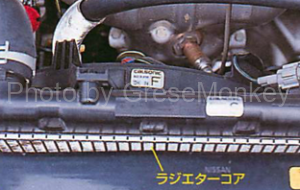
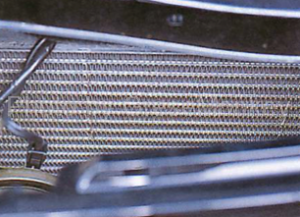
If the surface of this radiator core becomes dirty, cooling efficiency will be poor, so it is also necessary to do periodic inspection as well. Visually inspect the fin for damaged parts, for dust and dirt, for any leakage of the radiator liquid. Usually radiators are overlapped with parts for dissipating the heat of the air conditioner of the same structure as the radiator called condenser, so we will carefully check not to confuse them. When inspecting from the front grill, there are many parts where the condenser and the radiator overlap, so it may be a bit difficult to inspect from that gap. The condenser also checks the same check items as the radiator.
